Does choosing paint colors make you anxious?
It’s common because many don’t understand color science, even some experts. There’s a lot of misleading information about selecting paint colors, leaving many confused and unsure.
Don’t worry!
The easiest way to confidently choose your colors is by seeking advice from a real color expert. Ignore the internet clutter and well-meaning, but potentially misguided, advice from friends and family. Here are some essential things to remember.
Don't Listen to Friends, Family or the Internet
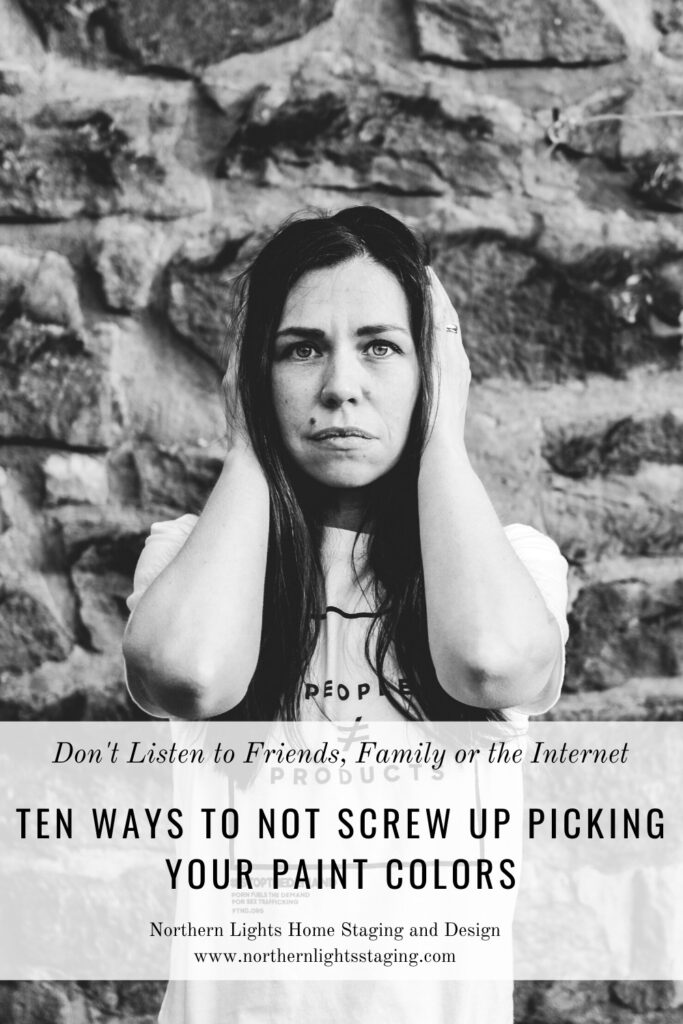
Everyone might suggest colors for your space, but remember, most of these suggestions may not be right for you. Why?
They aren’t you; they don’t know your personal tastes. They don’t live in your home; they don’t know how your fixed finishes look in various lights. They don’t see colors the way you do; everyone’s vision and perception are unique. Unless they’re trained color strategists, capable of interpreting color data, they don’t have the full picture to make the best color choices
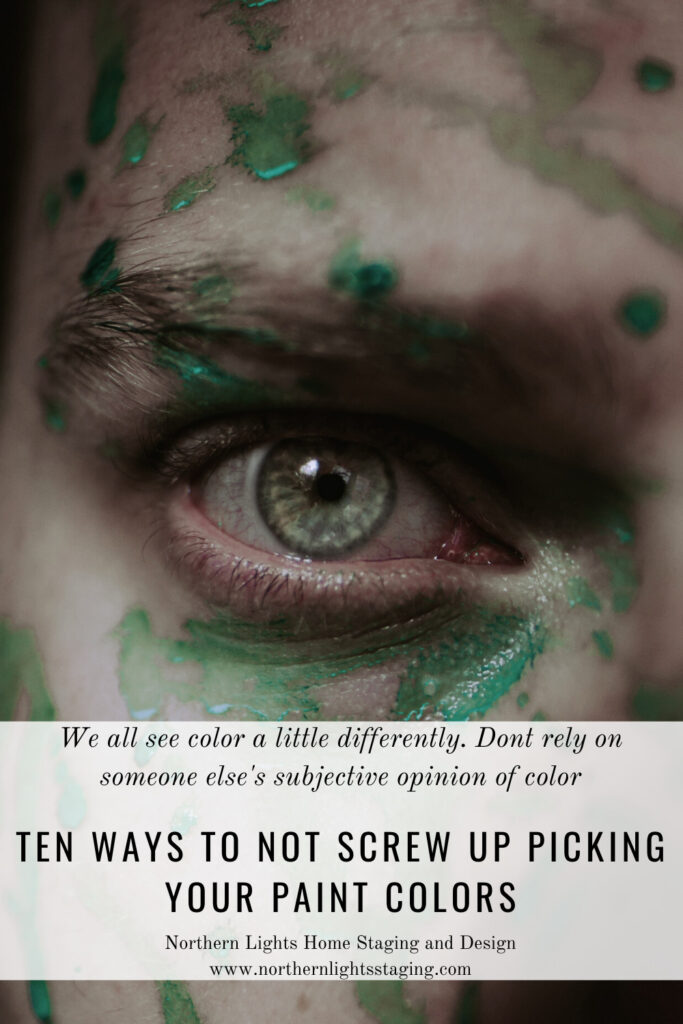
Steer clear of seeking advice from online forums like Houzz. Photos of your home can’t accurately convey your space’s unique colors – they’ll look different on every screen and won’t reflect your home’s true hues. A color combo that works in one home might not suit yours.
Anyone advising based on a photo simply doesn’t understand color well enough.
Determine What Colors You Really Like
Seems straightforward, but choosing from countless colors can be daunting! Start by identifying colors that bring you joy and make you feel good. It might be easier to start by ruling out colors you strongly dislike
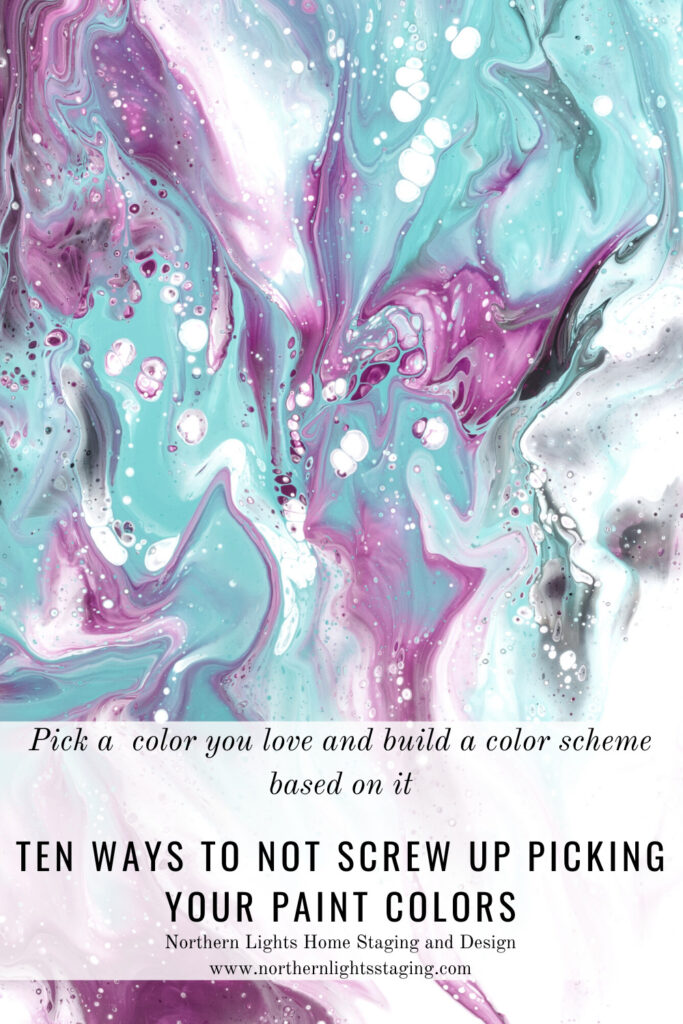
Narrow Color Choices Based on Fixed Finishes
Once you know what you really like, you do need to consider some “limitations” on what you can pick. They are your fixed finishes and narrow your choices to ones that look good with those things you are unlikely to change any time soon such as flooring, countertops, stonework, and more, Some Colors Are Bossy. Will You Listen to Them? to learn more.
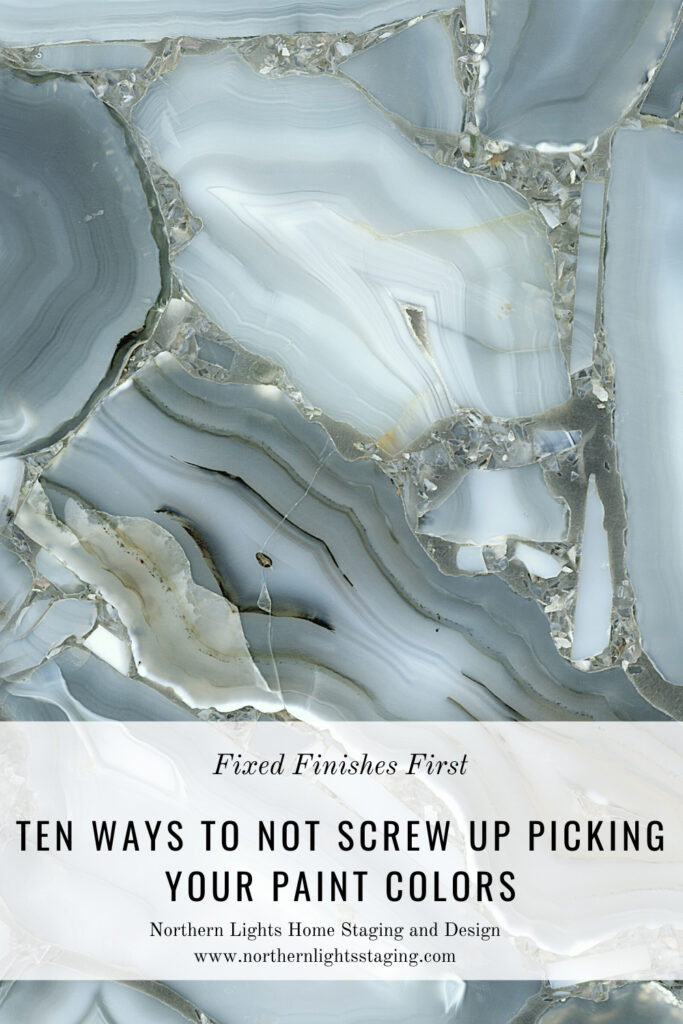
Stay in a Lane
Commonly, homeowners mix grays and browns, leading to less-than-ideal results. With the passing gray trend, many people paired gray elements with their brown woodwork, but this often looks off.
The key to blending grays and browns is using the right hues, values, and chroma – something color science can help with.
But without this understanding, it’s best to stick to either grays or browns. Choose a lane (gray or brown) and select colors that harmonize with your choice
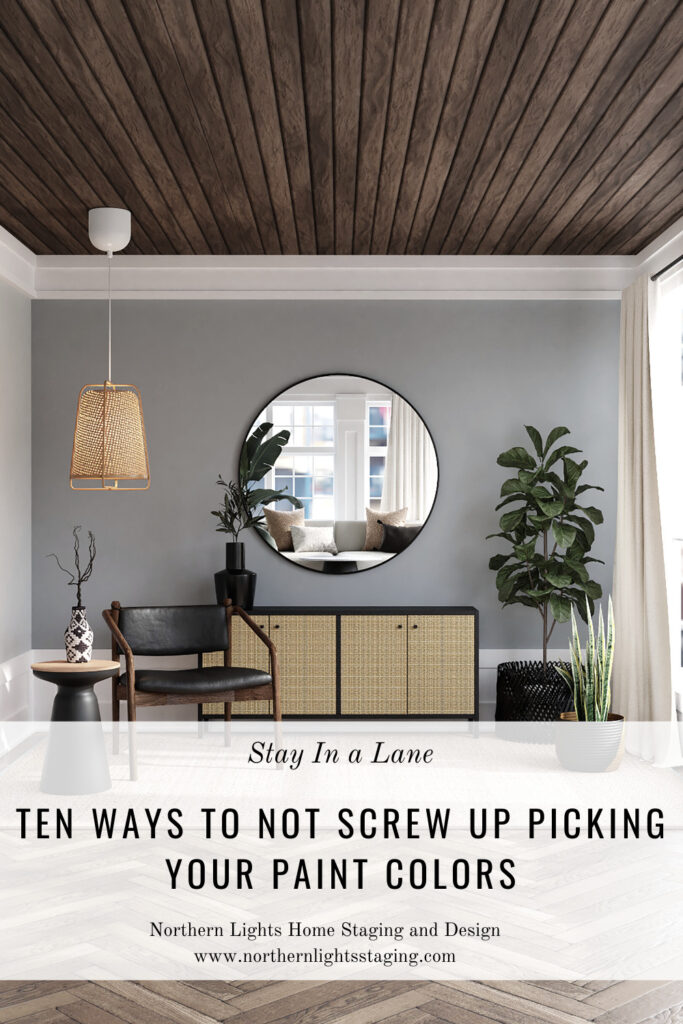
Ignore Undertones
There’s a lot of misinformation online about ‘undertones.’ People often use ‘undertone’ to describe how they see a color in a specific location, lighting, and time. However, this is subjective and inconsistent.
In reality, an ‘undertone’ is the color revealed when a paint layer is scraped off.
So, don’t get caught up in discussions about undertones. It’s likely to add confusion rather than clarity.
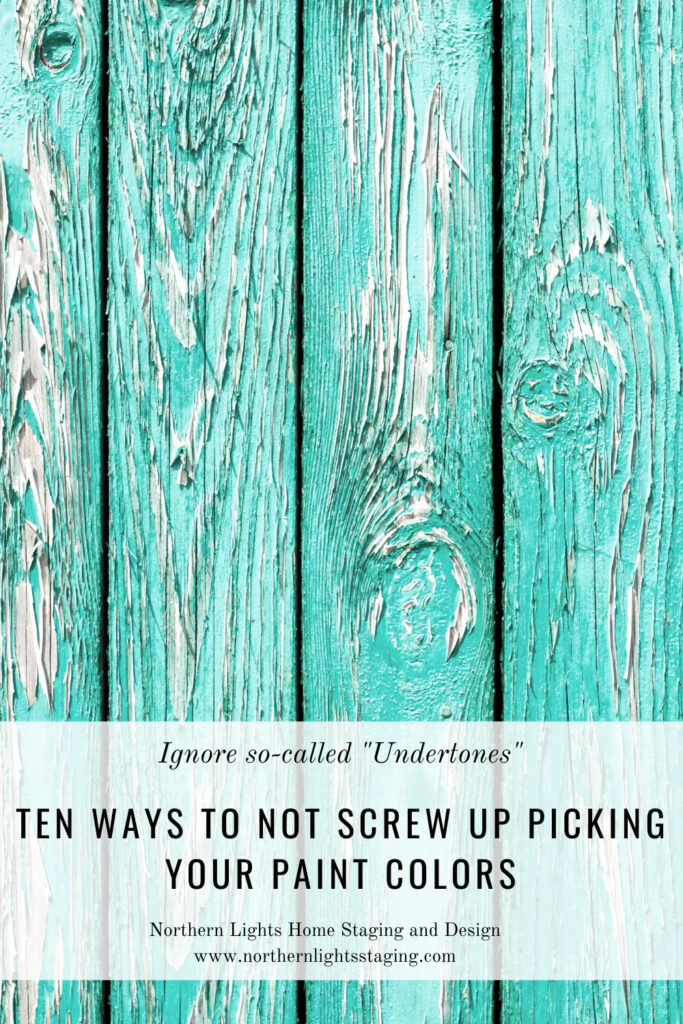
Don’t Paint a Bunch of Samples on a Wall Next to Each Other
When choosing paint colors, whether on your own or with an expert, painting samples in your space to observe them under different lighting conditions is crucial.
Many people paint various color samples side by side on a white background to compare. However, this isn’t effective. Why?
Because each color alters how you perceive the adjacent one due to a phenomenon called ‘simultaneous contrast.
For instance, if you paint a dark color like ‘Moscow Midnight’ on a white background, the white makes it seem darker and grayer. Similarly, painting complementary colors (those opposite each other on the color wheel) side by side can make them appear more vibrant. For example, green seems greener when next to red, and vice versa.
So, be mindful of this when comparing color samples.
It is better to paint on paper or something moveable rather than the wall, and look at colors individually in different light conditions.
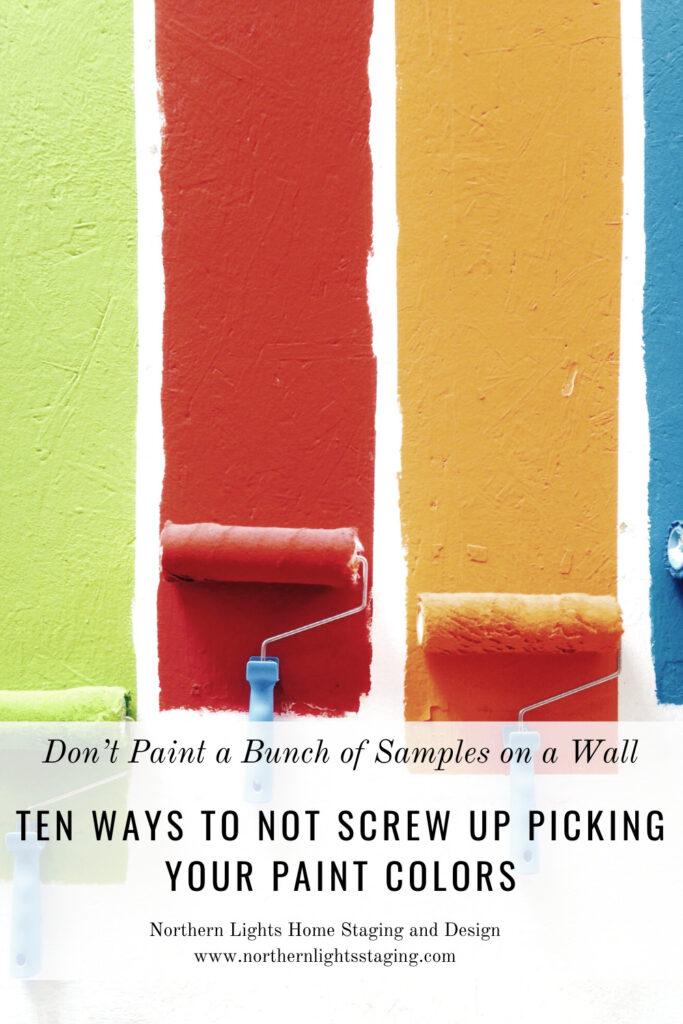
When colors that aren’t complementary, like red and orange, are placed next to each other, they subtly affect each other’s appearance. For instance, red might make orange look slightly greenish, and orange could give red a slightly bluish tint.
I know, it might sound odd! But that’s one of the fascinating aspects of color science.
So, when evaluating colors, avoid painting a wall full of samples side by side. It complicates things! Instead, examine each color individually.
Look at Your Colors on a Gray Background- Not White
Many think white is the perfect neutral background to test colors. While it’s true that adjacent colors can influence your perception, white is not the solution. Just like other colors, white comes in various shades and can influence how your chosen color appears.
More importantly, the concept of ‘undertones’ that many refer to is often just a subjective opinion about the origin of a particular white or gray. In reality, this can be scientifically determined in seconds without painting anything.
The key issue with testing colors against a white background is that it can make all colors seem washed out, darker, duller, and less colorful. But once you paint your space, the color will appear much lighter, brighter, and more vibrant than expected.
For example, if you test Sherwin Williams ‘Moscow Midnight’ against a white background, it will look different than when applied to a full room.

Testing colors against a black background? It also distorts the appearance of your color, but in the opposite way to white. Black makes colors look lighter, brighter, and more colorful. When applied to a whole room, the color might look darker and duller than expected.
So, what’s the solution? Test your colors on a gray background. Gray is the most neutral color and will have the least influence on your chosen color. For example, Moscow Midnight appears truer to its actual color when viewed against gray.
Don't Let Your Whites Look Dirty
Choosing white might seem simple, but it can be trickier than you think. Every white has a hint of color, or hue, with minimal chroma or saturation. If you’re planning to use different whites in the same space, ensure they harmonize well.
Whites that are too similar in color values can make each other appear ‘dirty’. So, picking the right whites can be just as important as choosing your main colors.
Find One Thing In Common
Creating a harmonious color scheme involves having a shared element – be it hue, value, or chroma – across your selections. Make sure to maintain this common thread throughout your home for a cohesive look

Use the Color Wheel to Make a Plan
After identifying your favorite colors that also complement your fixed finishes, the next step is forming a color scheme. A color wheel can be a great tool here, helping you see which color relationships you’re drawn to. You might prefer a monochromatic or complementary scheme, or perhaps a diad, triad, or tetrad arrangement. A split complementary scheme could also work well.
With the help of a color wheel and color science, you can create a scheme that truly resonates with you. A color strategist can really help with this.
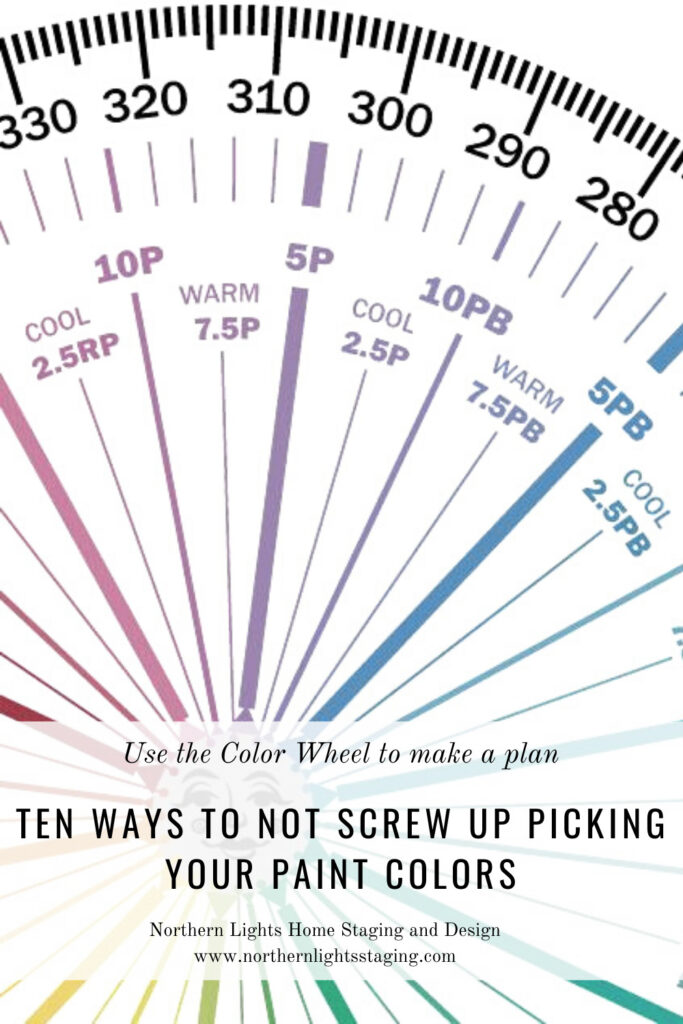
Use the Science of Color to get Extraordinary Color
Color science is a powerful tool. It helps pinpoint your favorite colors, select options that match your fixed finishes, create a harmonious color palette, and even choose the ideal whites. It removes the guesswork, ensuring fantastic results the first time around.
Embracing color science can elevate your color choices to a new level, leading to extraordinary results. If you’re unsure, consider hiring a professional with color science knowledge. The outcome will undoubtedly be worthwhile.

You are Making My Head Hurt
Now that I have told you how to not screw up your paint colors, you may be realizing that color is more complex than you thought.
Understanding the complexity of color might make you second-guess advice from well-meaning friends or even online experts. But why listen to me? Well, don’t just take my word for it – trust the science.
Many might ignore the science of color, preferring to rely solely on their ‘eyes’ and the art of color, as it seems simpler and more enjoyable. However, combining both the science and art of color leads to quicker, easier, and ultimately more stunning results

Are You Ready to Try a New Approach?
As a certified color strategist, I combine the art and science of color to eliminate guesswork and help you select the perfect paint colors. Let’s bypass the misinformation and aim for accurate, stress-free color selection the first time around, saving you time and money. Ready for a fresh approach?
Stop stressing about picking your paint colors and finishes with this science-based 2-hour color consultation. Learn More.
Get Your Free Report

Terms of Service | Privacy Policy | Disclaimer
Prices subject to change without notice.
Blog may contain affiliate links, meaning I receive a small commission for sharing at no additional cost to you.
Call 907-362-0065 today
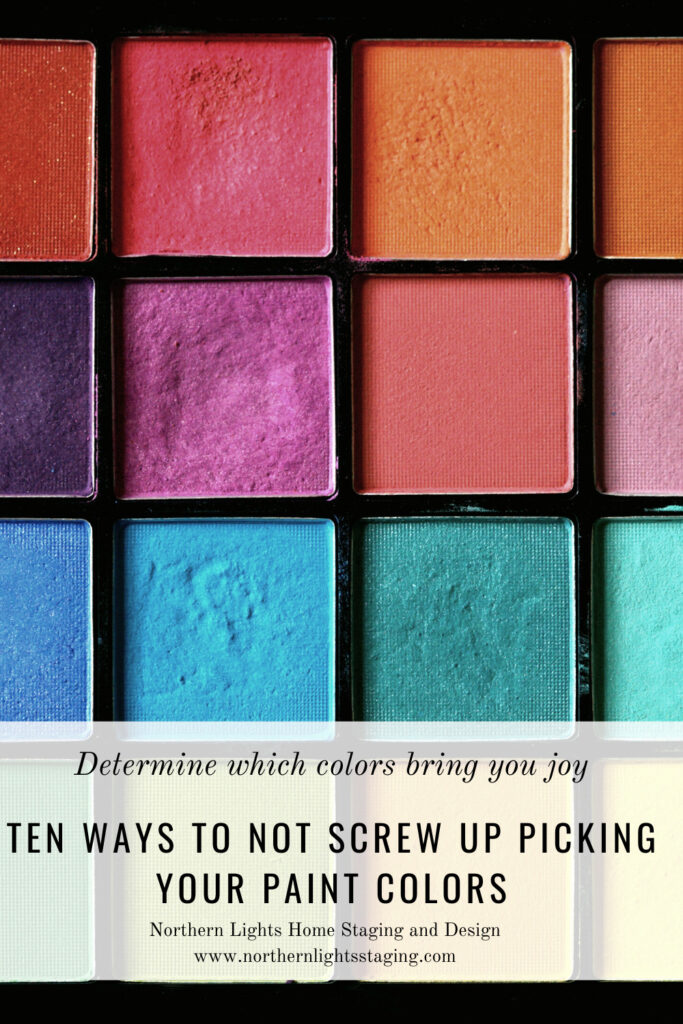
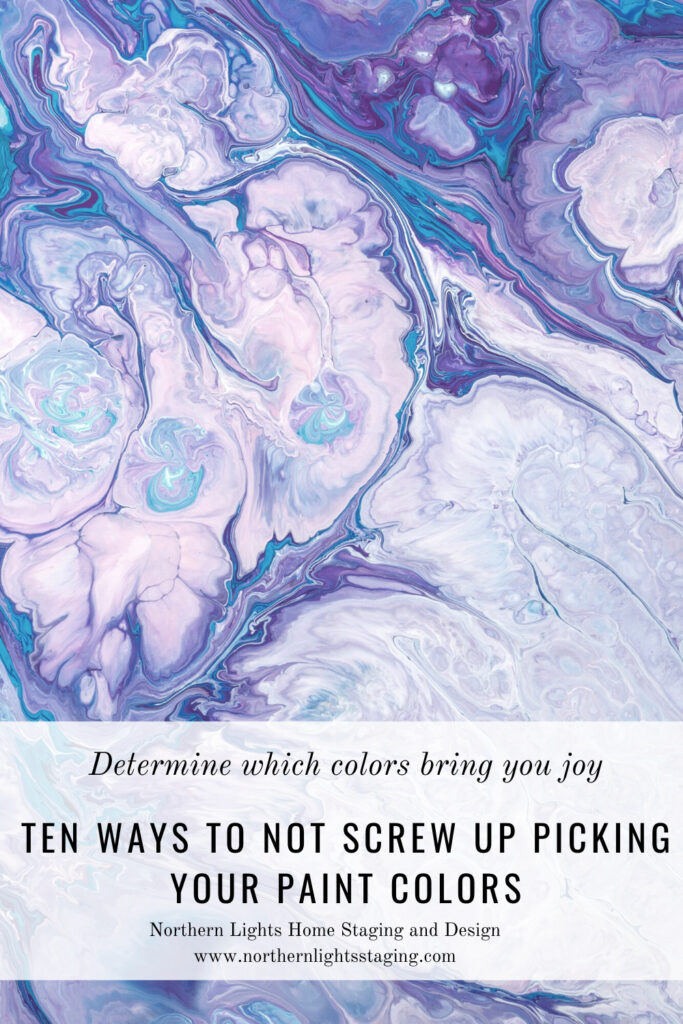
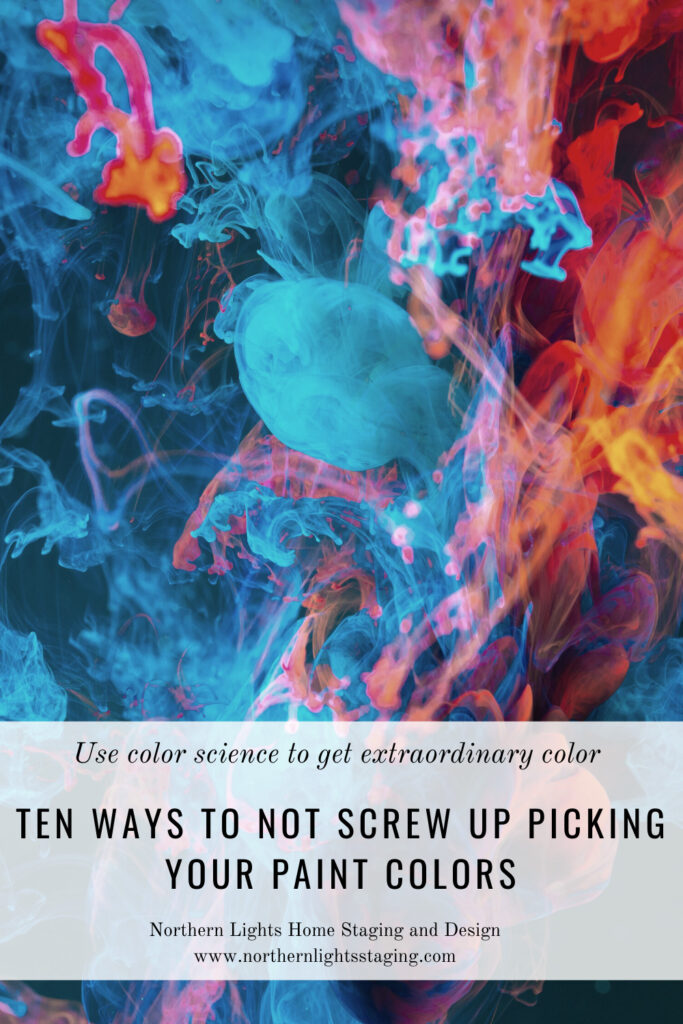

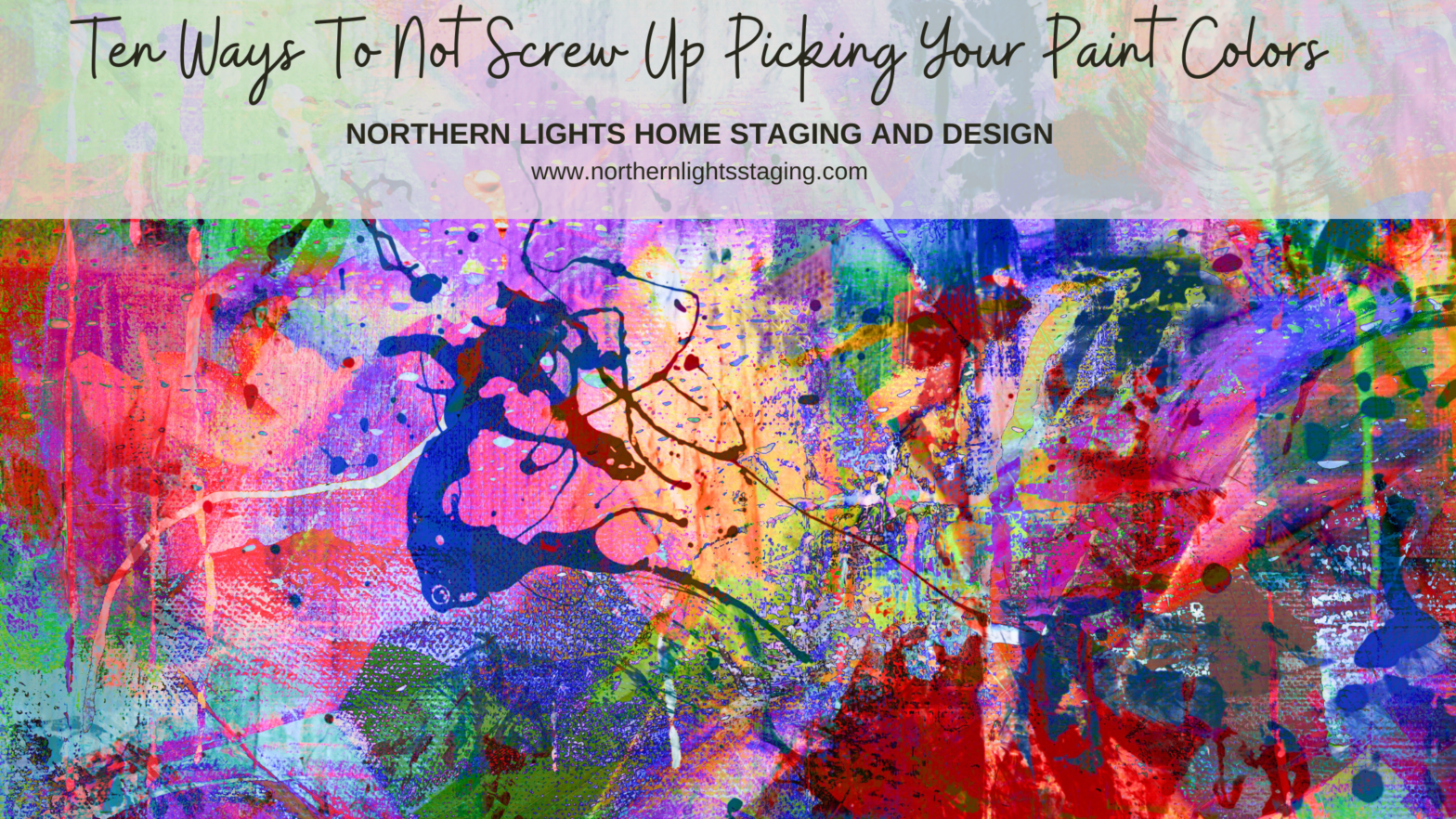
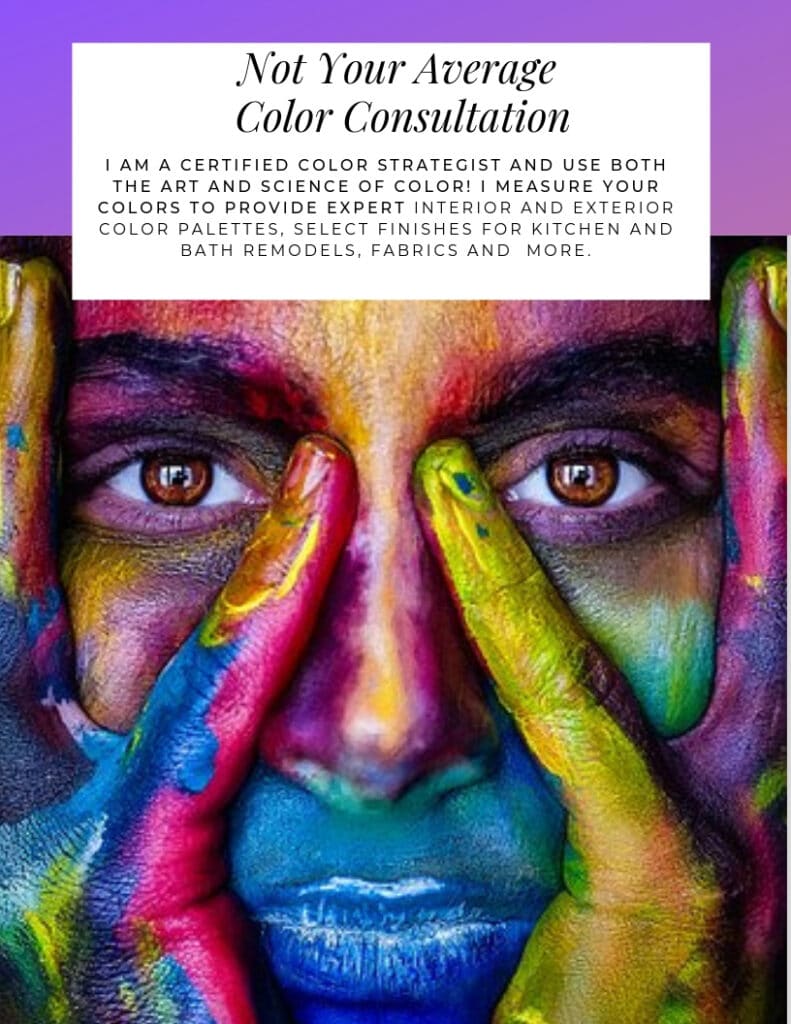
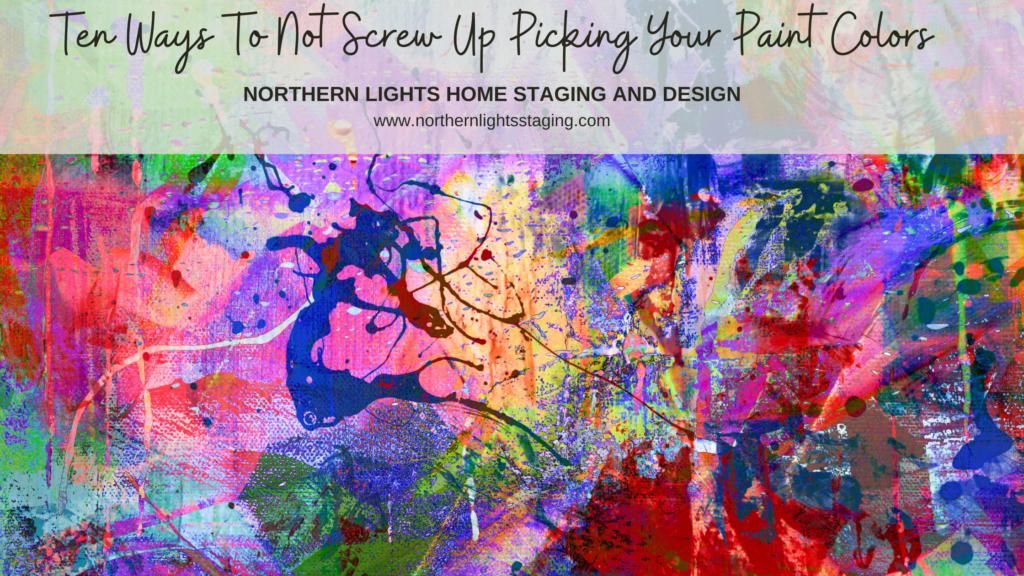
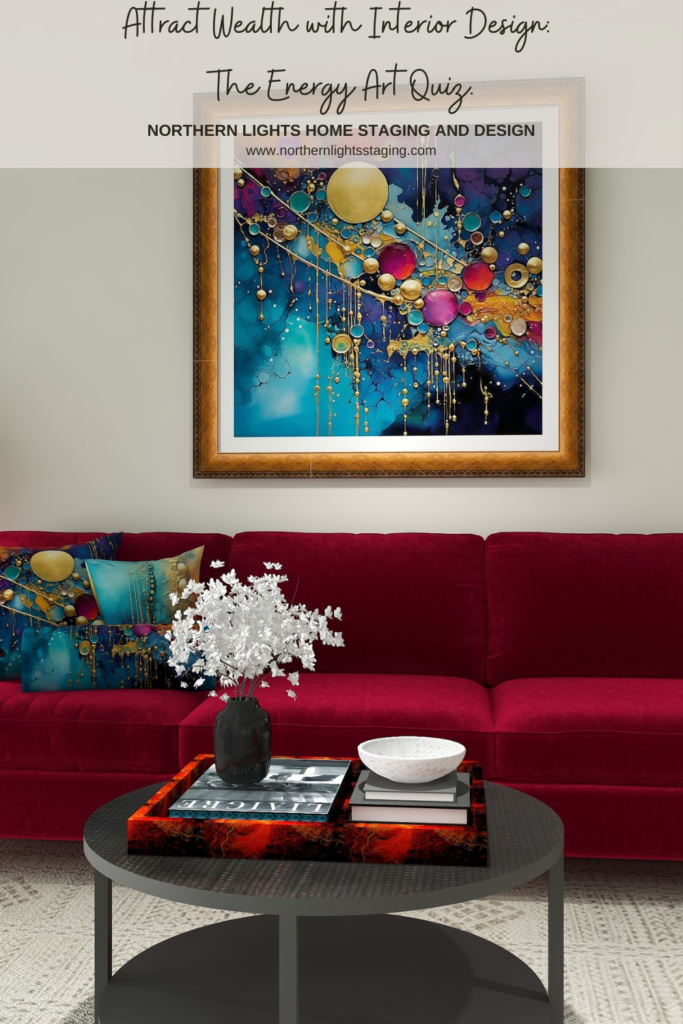
Great advice, Mary Ann! Color selection is the alchemy of science and art! I especially love the admonition to stop painting a bunch of swatches on the wall next to each other, which is the first thing most people do thinking they are being really diligent…just say no!
Thank you! I have had numerous consultations where they have painted a whole wall of color swatches. No wonder they are confused and stressed about color!
So many great tips, thanks! Color science really is amazing!
It really does make the magic happen and simplify all the noise out there about color.
This post is a bonanza of valuable color scheme information. I feel like it is a perfect summary of what was a whole semester of color theory in school. Well done.
Thank you so much!
My top 2 favourite tips: don’t listen to friends and stay in a lane! Loved all of your tips, but those 2 are my top ones! Great advice as always.
Haha, not listening to friends is one of the best!
Wow! What a lot of great info. Your imagery is really impressive.
Thank you so much!
I love that you demonstrated how choosing colors can actually be quite complicated. Great instructions and inspiration for those who are “green” to this complex process!
Thank you so much!